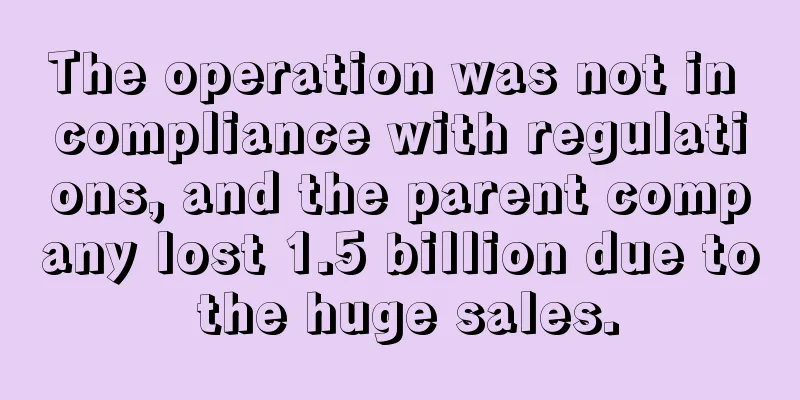The seller linked more than 10 accounts in a row, possibly because of payment association!

|
As the peak season approaches, just as sellers are gearing up to make a big splash, some sellers have been hit hard by Amazon and their accounts have been blocked. Sellers are also speculating about the reasons for the blocking.
Amazon scans accounts again? A batch of sellers’ accounts were blocked
Recently, a seller asked for help on a certain platform: "Has Amazon started scanning accounts again recently? More than a dozen accounts have been scanned this month. " In fact, there are many sellers who have had the same experience recently↓
"The accounts that were just purchased, including those from the US and UK, all had orders placed, but they were suspended after about 10 days." "I also have three accounts, all of which are new accounts I just got." "My two stores were blocked because of the connection between payment accounts, because they used the same parent account."
As for the reason for the account suspension, Amazon stated in the email that it was "unable to verify the relevant information related to the seller's account, and has not received any new information about the seller's listing or sales history."
Under this situation, many sellers said: "Amazon is taking action again, so we should quickly find out the reason for the account blocking and avoid the pitfall." Some sellers speculated that new accounts may be easily blocked or misjudged by the system, but most sellers agree more with the statement that "the account was blocked due to payment association."
There is indeed evidence that the account was blocked due to payment association. In the payment tool backend policy, Amazon can see the information of third-party payment account holders. It is easy to imagine what actions Amazon will take according to the policy after discovering that the seller has payment association issues.
Earlier, when a seller registered a new store, he found that if he used the same payment master account to open several payment sub-accounts, as long as one store was blocked, all subsequent stores would be blocked, even if he applied for a new store. This situation changed when the seller changed the store to one-to-one payment, that is, the payment account holder and the store legal person were changed to be the same, and the account was no longer blocked.
For this reason, some European sellers decided to take a safe approach and began to bind the same payment account to multiple stores, instead of binding one payment account to one store, to avoid the possibility of account association.
However, some sellers disagree with the statement that "payment association leads to account suspension". They feel that they have always bound the same payment account to different stores and there has never been any problem. It may be because of the different sites.
" In Europe, you have to pay VAT , do KYC certification, and accept anti-money laundering reviews, etc. The receiving bank needs to provide some certificates. Is it because of these that it is subject to strict inspections ? Other sites are more lax in inspections. " said a seller.
It is understood that most of the sellers whose accounts were blocked this time are indeed European sellers. However, for Amazon sellers, if there are too many sub-accounts bound to the main payment account, once Amazon scans the account, the risk factor of the store will increase accordingly.
As early as April this year, some sellers’ accounts were blocked even though all processes were in compliance with regulations. Some sellers received similar emails at the time. Some sellers appealed through the internal channels of the investment manager and were told that "due to problems with the binding of the payment account, the store has been judged as a high-risk account."
Amazon has strengthened its compliance review of accounts and made it more difficult for sellers to unblock accounts. This is a warning to sellers to avoid association with both new and old accounts. Amazon requires compliance operations, while also ensuring the independence of data, product information, payment accounts, etc. Try not to open multiple sub-accounts to avoid the risk of account scanning.
Account association often occurs? Avoid association even when filing a complaint
Amazon account association can be said to be one of the things that sellers fear the most. In the past, the problem of association has always existed. Many sellers have had their accounts blocked for various reasons. In addition to the association of payment accounts, sellers may also encounter the following association situations ↓
IP association. According to Amazon's regulations, a browser can only log in to one store under normal circumstances. If the seller wants to log in to a second store, he must download a different browser or find other ways. Sellers with multiple stores need to pay special attention to this.
Real-name information association. It is not uncommon for a seller to have multiple stores, but the security of some purchased stores needs to be verified. Because the purchased stores may be sold to multiple sellers, once a real-name site has a problem, the purchased store will also suffer.
Address information association. From the platform's perspective, it is definitely hoped that one merchant corresponds to one store, but if a platform wants to connect with multiple stores of one merchant, it will increase the platform's workload and their operating costs. This is one of the reasons why Amazon will conduct strict inspections, and sellers need to make a good distinction between the address information in the background.
Email association. A seller who just registered a business license and applied for an email address received a notification that "this email address is associated with a deactivated seller account." According to the seller, the email addresses are different, but only the passwords are the same, which also led to the association.
In addition, there are many common account association issues, such as try not to purchase accounts, as purchased accounts are prone to account association; do not use the same set of information to register different sites; when using the same person's credit card for the same account, ensure that the credit card numbers are different, etc. Sellers need to understand these issues to avoid account association while reducing losses.
Of course, after their account is blocked, many sellers will actively appeal in addition to trying to find out the reason for the blockage, but the appeal templates being too similar can also lead to association. Some sellers reported earlier that they were judged to have account association because their appeal templates were highly similar to others, and they were eventually shut down.
For sellers, if there is a problem with the account, first of all, you need to prepare all the Amazon account information that may cause the problem to prove that the account is legitimate. Secondly, when filing an appeal, you can refer to the relevant templates for format and grammar, but the specific situation of the account and the reason for being blocked should be rewritten according to your own situation to avoid the situation where the template is similar.
At present, Amazon is accelerating its pace of full compliance, and sellers still need to adhere to the route of compliant operation and not take actions that violate platform policies. Of course, to avoid the occurrence of account association, sellers can refer to the following preventive measures: If the seller has accounts that may be associated, it is recommended to withdraw money in advance every day; if there are new products to be developed, it is recommended to upload them to a safe store; if there are extra company information, it is recommended to register multiple new stores for backup; if the seller wants to purchase accounts, it is best to purchase them on the entire site. Amazon Account Linking Seller |
<<: Amazon may face a shortage of employees in 2024, with a 150% employee turnover rate
>>: Amazon lost the case! Dongguan seller successfully unblocked the frozen funds
Recommend
The segmented market has reached its peak, and there are still experts in the 3C track!
In the eyes of most cross-border people, the 3C d...
Looking for the leader in overseas expansion! AliExpress held the first cross-border e-commerce talent competition
The era where you can do cross-border e-commerce ...
Wanlihui upgrades its "three-piece package for going global" to allow sellers to open an account in 1 minute and receive payments from 120 platforms
The 135th Canton Fair, which just closed last Sun...
What is Product Hunt? Product Hunt Review, Features
<span data-docs-delta="[[20,{"gallery"...
What is AIQ? AIQ Review, Features
AIQ is a financial technology company focusing on ...
What is OnePro? OnePro Review, Features
OnePro is an e-commerce platform for overseas prod...
Celebrating the first anniversary! The pilot reform of B2B export supervision will be promoted nationwide
According to the announcement of the General Admi...
Amazon India exports $3 billion
Amazon has facilitated exports worth $3 billion f...
What is MediaWorld? MediaWorld Review, Features
Media World is the first Italian non-food distrib...
Half-year revenue is nearly 1.4 billion, another big hit that makes people earn a fortune in silence!
Under the wave of account bans, big sellers have ...
South Korea's sex ratio at birth drops to lowest level! Boys are no longer preferred
According to the "2020 Birth and Death Stati...
Flipkart outperforms Amazon in first week of India's festive sales
According to RedSeer Consulting , e-commerce comp...
eBay adds new overseas warehouse service provider, Amazon UK sellers' monthly revenue reaches 2.5 billion pounds
eBay adds new overseas warehouse service provider...
Due to the risk of serious external injuries, toy products have been urgently recalled on multiple platforms!
Children cannot grow without toys. Puzzles, dolls...
What is My Yearbook
MyYearBook is the third largest social networking...









